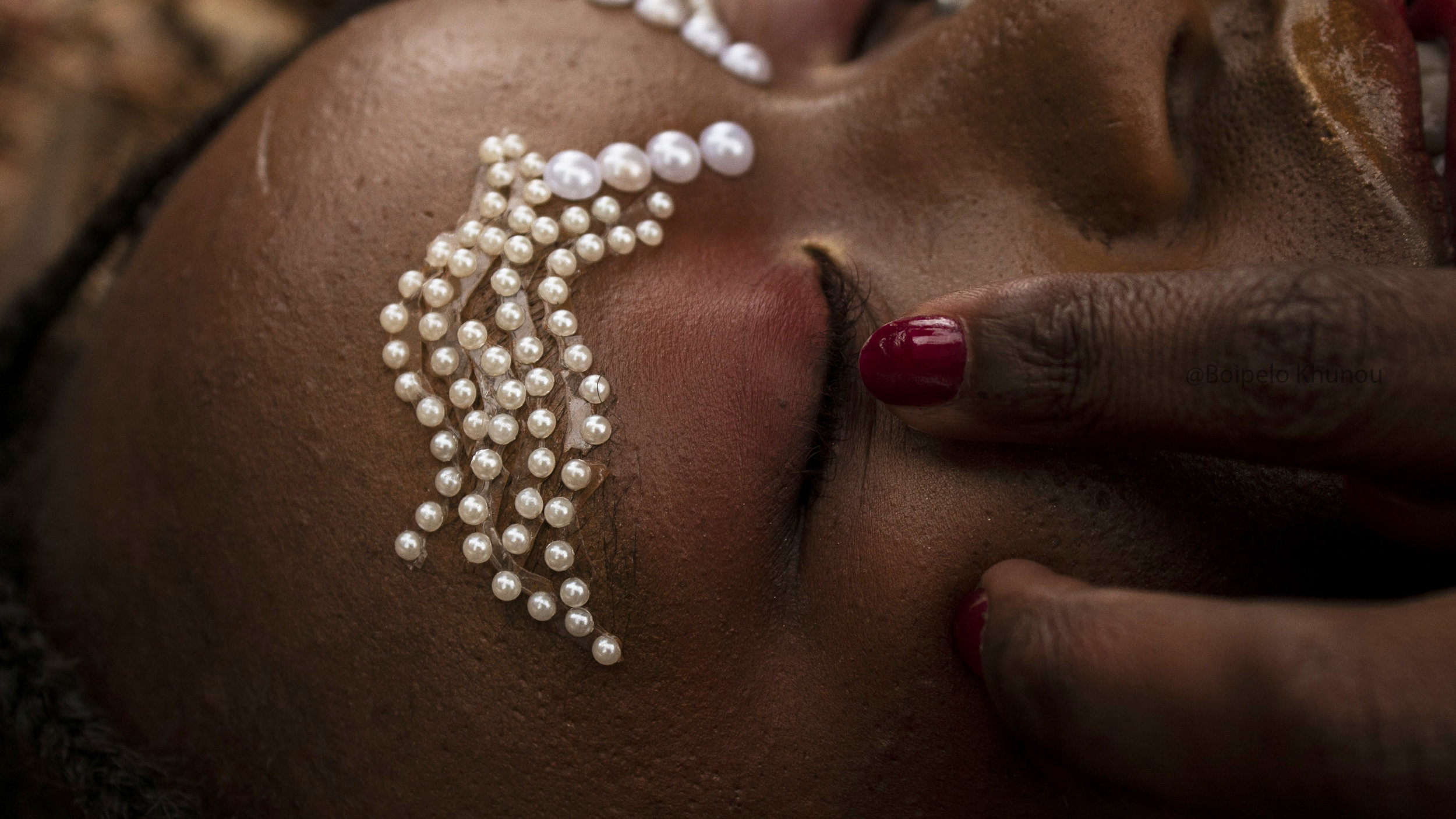PHOTOGRAPHERS TO KNOW: BOIPELO KHUNOU
BOIPELO KHUNOU
Photographer and videographer from South Africa capturing lived experiences conceptually, while encouraging her subjects to recognize their personal creative power in the process.
SHEER: Tell us a little bit about yourself.
BOIPELO KHUNOU: I am an artist based in Johannesburg, South Africa and I grew up in a town called Matlosana in the north west province of South Africa.
SHEER: When did you start taking pictures and what made you want to pursue photography professionally?
BK: I began photography and exploring my creative interests in high school. I was in the right place and time to attract creativity into my life and it was a really great way for me to connect with people and develop my creative interests. Through those connections I started getting requests from people to photograph their weddings, personal portraits, etc and that is when I began to work towards a professional career as a photographer and eventually a videographer. I started my business last year and have been developing it since then. It comes with its challenges because there is so much involved in being a photographer and so much space to grow professionally. So I am at the point in my life where I'm refining what kind of work I want to create professionally and how I need to reach those levels.
SHEER: How would you describe the influence of your cultural background and upbringing on your work?
BK: My childhood was full of exposure to different artistic outlets and a lot of play which I am grateful for and growing up I was always interested in creative pursuits. I come from a home which is headed by two deep ambitious parents who are real go-getters and very practical in their approaches to their respective interests, so they have definitely inspired me to think creatively and to fearlessly believe in my creative abilities. I've learned from them that it always takes effort and consistency to see your visions through and even once you've reached success there are many aspects that will follow. In that case, the creative journey and work never really ends. There is always space to reinvent.
SHEER: How do you choose the themes and subjects in your work and how do you approach representing women of color?
BK: I don't work in a static way, my work experiences and outcomes are from different contexts and often come about through a collaboration with other creators. I enjoy that process and have realised that it works for me. The collaborations need to be genuine, open and conceptual. I find it too easy to take images simply just for the act of taking an image. I want meaning and thought to the process, it makes the photography and filming process become larger than the end result. As a result, many of the people who have supported my work and vision are my friends and women of colour in the communities around me. I owe a lot of my career efforts to their trusted support in me. With that in mind, I want the women I photograph and work with to feel involved in the process, comfortable, confident and free to explore the ideas they wish to share with me.
SHEER: Where or who do you draw inspiration from for your style of photography?
BK: I find this question hard to answer every time because my inspirations simply come from an interest in documentation and story telling in ways that give the people I photograph a sense of power as I like to think that my work reflects the personal power of those who I photograph with. The concepts that come to me draw inspiration from dreams I have and lived experiences that I want to express in conceptual ways. An example of this is my dream narrative that I directed and filmed called Diphuka where I was exploring the sense of being ones own saviour and means to resurrection. This project opened me up to the possibility of directing, filming and producing my own projects. Once I found this powerful creative process I decided to find more people working in this way that was intentional and often centered around narrative creation and collaboration. I admire the work of these artists who have honed their style, in my eyes. These people include creators such as Stephanie Nnamani, Jen Nkiru, Durimel, Daniel Obasi, Yagaazi Emezi, and MarVin among others.
SHEER: Where are some of your favorite places to shoot? How does this impact your work?
BK: Natural locations are my absolute favourite. There is so much character in nature already and I find that it is the best collaborator as it comes with its own input, depending on weather, objects in the site itself and light. Looking through my work you will find that I mostly use naturally lit locations and accents of nature. I grew up around many natural elements and a lot of space to contemplate and understand nature and when I began photography I gravitated to making images of my natural surroundings. Natural settings complement my ideas because of the complex beauty you find in nature, nothing is perfect yet it all works well together.
SHEER: You're also a videographer. How do you approach video vs photography? Are there certain themes you prefer to shoot video for over taking photographs?
BK: I feel that my video work is an extension of my photographic work. The videos are photographs in motion in my eyes and they allow me to uncover more concepts. They are challenging to create and have less limitations than photographs do, so with video I want to dive deeper into my concepts and adding sound and text really help in that regard. I also create videos for clients and their events which is another aspect of documentation that works with the idea of capturing lived experiences.
SHEER: How would you like your art to evolve over time?
BK: I definitely want to direct more of my own work and have that work travel beyond the online space. I want to see how people react to the works in physical spaces elsewhere in the world. In the form of screenings, publications, workshops and installations. There is just a different sensibility to bringing my mostly digital work into physical spaces and I'm excited to do that in the future.
SHEER: What do you hope women take away from interacting with your work?
BK: I hope anyone viewing my work can imagine themselves working with me. That what they see reveals a yearning for them to see themselves and to explore their own representation. Art making really is a playful and intellectual exercise and when a viewer recognises that wonder and play in an image, it reflects something they have within themselves and to see possibility in their personal creative power.









